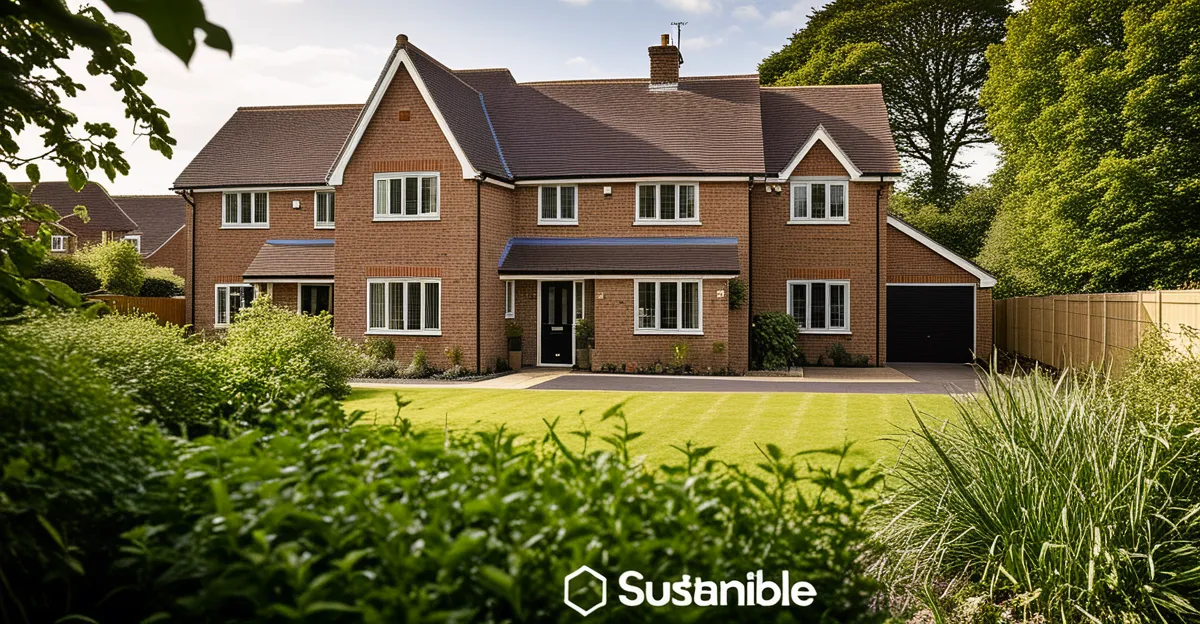Overview of Green Financing
Green financing is a crucial concept in today’s evolving financial landscape, primarily aimed at supporting environmentally sustainable initiatives. It encompasses a wide range of financial products and services designed to encourage investments in eco-friendly projects. Its significance is increasingly recognized in the UK real estate sector, where sustainable investment is vital for reducing environmental impacts and enhancing energy efficiency in buildings.
In the context of UK real estate, green financing plays a pivotal role. As the sector faces mounting pressure to reduce carbon footprints and boost energy efficiency, financing options like green loans and sustainable mortgages have become essential. These instruments not only facilitate the development of sustainable properties but also ensure compliance with environmental regulations.
Also to read : How can UK real estate crowdfunding opportunities be leveraged?
The current market trends in green financing reflect a growing investor interest in sustainability. This shift is supported by a strong regulatory environment, which encourages the integration of sustainable practices within real estate operations. With government incentives and supportive policies, the UK real estate market is steadily aligning with global sustainability goals, facilitating a more robust and environmentally conscious financial framework.
Understanding the benefits and opportunities that come with green financing can guide investors and developers in making informed decisions, ultimately leading to a more sustainable future for the real estate sector.
Also to see : How Will Emerging Technologies Impact the UK Real Estate Finance Landscape?
Environmental Benefits
Environmental sustainability plays a pivotal role in the conversation around green financing, particularly within the UK real estate sector. By investing in energy-efficient buildings, the reduction of carbon emissions becomes more achievable. These buildings are designed to use less energy, mainly through efficient lighting, heating, and cooling systems. This helps in curbing the release of greenhouse gases, thereby contributing significantly to carbon reduction efforts.
Additionally, green financing initiatives aim to improve air quality, instrumental in enhancing urban living conditions. Adoption of sustainable practices in construction and maintenance ensures that pollution levels decrease, benefiting both the environment and public health. Projects funded by green financing often incorporate green spaces and plant life, which act as natural air purifiers, further enhancing air quality.
Moreover, biodiversity and climate change mitigation are key benefits tied to this approach. By supporting eco-friendly installations and preserving green spaces, these projects contribute to sustaining local wildlife and ecosystems. Long-term, these efforts foster resilience against climate-related issues, aligning with global sustainability targets. By understanding and championing these benefits, investors can make environmentally conscious decisions that not only fulfill regulatory requirements but also enhance the quality of urban life.
Financial Advantages
Cost savings are a key benefit of investing in energy-efficient infrastructure within the UK real estate sector. Properties that incorporate sustainable technologies such as solar panels and insulation significantly reduce utility expenses, providing owners with substantial operational cost reductions. These savings often result in quicker payback periods for the initial investments in eco-friendly upgrades.
Green certifications, like BREEAM or LEED, can greatly influence a property’s value. Buildings meeting these standards are often seen as more attractive to tenants and investors, potentially leading to higher rental income and property resale values. The enhanced perception of value encourages more stakeholders to invest in sustainable practices, boosting market demand.
From an investment perspective, green financing is attractive due to its potential for long-term returns on investment (ROI). Government incentives, such as tax breaks and grants, further improve financial prospects for investors willing to engage in sustainable property ventures. These incentives, coupled with the rising demand for green-certified properties, illustrate the sound financial reasoning for adopting green financing in the real estate market.
Green Financing Options
The UK offers a variety of green financing options designed to support sustainable investment in real estate. One primary option is green loans, which are specifically allocated for eco-friendly projects. These loans often come with favourable terms and interest rates tailored for development projects that maintain high sustainability standards.
Another popular choice is sustainable mortgages. These mortgage products provide incentives such as lower interest rates for homes that meet certain energy efficiency criteria. By incentivising energy savings, these loans encourage homeowners to adopt sustainable practices.
When comparing traditional financing with green financing, the key difference lies in the focus on sustainability. While traditional loans may not account for environmental impact, green loans and mortgages assess potential environmental benefits. This shift highlights the growing recognition of the importance of sustainable investment.
Banks and financial institutions play a crucial role in promoting green loans. By offering these products, they align their portfolios with sustainability goals, contributing to environmental efforts. As demand for eco-friendly investments rises, these financial services are expected to expand, facilitating greater access to funds for sustainable real estate development.
Case Studies in the UK Real Estate Market
Green financing has set the stage for impressive real estate examples within the UK, showcasing how financial backing can drive sustainable development. Prominent among these is the King’s Cross Central development in London. This project exemplifies how commitments to sustainability can be woven into the urban fabric, resulting in enhanced environmental performance and improved urban spaces. Through strategic use of green financing, the development has implemented eco-friendly technologies and energy-efficient systems, impacting both the local economy and community positively.
Another successful project is the One Nine Elms, which stands as a testament to the potential of sustainable investments. By integrating green building standards, the project has not only lowered its carbon emissions but also served as a benchmark for future developments. The completion of these projects provides valuable lessons learned for developers, showcasing the ability to attract environmentally conscious investors and tenants.
These projects have ripple effects, positively impacting local communities by increasing access to green spaces and contributing to better urban living conditions. Furthermore, the economic benefits are notable, with increased property values and job creation adding to the local economy. By analysing these outcomes, it’s clear that the impact of green financing in real estate is profound, fostering greater sustainability in urban development.
Government Initiatives and Policies
The UK government plays an essential role in shaping the landscape of green financing through a robust regulatory framework and various incentives. One of the critical initiatives is the Green Finance Strategy, which seeks to accelerate investments that align with the UK’s climate and environmental goals by increasing awareness and advocating for sustainable finance practices. This strategy underlines the importance of integrating climate considerations into financial decisions, particularly within the UK real estate sector.
A prominent part of this framework includes the implementation of laws that enforce sustainability policies. For instance, the Minimum Energy Efficiency Standards (MEES) set by the government mandate that properties meet certain energy performance criteria. These regulations compel real estate developers to prioritize energy efficiency in their projects, ensuring that sustainability remains a core focus.
Incentives offered by the government aim to encourage developers and property investors to transition towards sustainable practices. These include tax exemptions and grants for eco-friendly projects, which significantly enhance the return on investment for stakeholders engaging in sustainable ventures. Such initiatives bridge the gap between traditional and green financing options, fostering an environment conducive to eco-friendly investments.
Through these coordinated efforts, the UK government aims to position the nation as a leader in sustainable finance, promoting a market that not only responds to environmental needs but also offers substantial benefits to investors and the broader community.
Potential Risks and Limitations
Green financing, while beneficial, comes with its own set of challenges that can pose barriers to widespread adoption within the UK real estate market. One major barrier is the initial cost associated with implementing sustainable practices. Despite long-term cost savings, the upfront investment required for eco-friendly projects can deter developers and investors, especially when traditional financing options seem more immediately viable.
Understanding market perception and the role of awareness is also crucial in addressing these challenges. Many stakeholders might not fully appreciate the value of green investments, often viewing them as financially risky due to uncertain returns and a lack of familiarity with sustainable technologies. This perception can limit the market’s willingness to invest in green financing, despite its potential benefits.
Furthermore, there are financial risks associated with green investments that must be considered. Fluctuations in government policies and incentives can introduce unpredictability, affecting the financial viability of eco-friendly projects. For instance, changes in subsidies or tax credits could alter expected returns on investment, thus deterring potential investors.
Lastly, the industry must also grapple with the technological risks of adopting new systems and processes. Ensuring that projects meet rigorous sustainability standards can be complex and resource-intensive, potentially leading to unforeseen costs or operational challenges. Therefore, while the push toward eco-friendly practices continues, recognising and addressing these limitations is vital for fostering a more sustainable real estate market.







